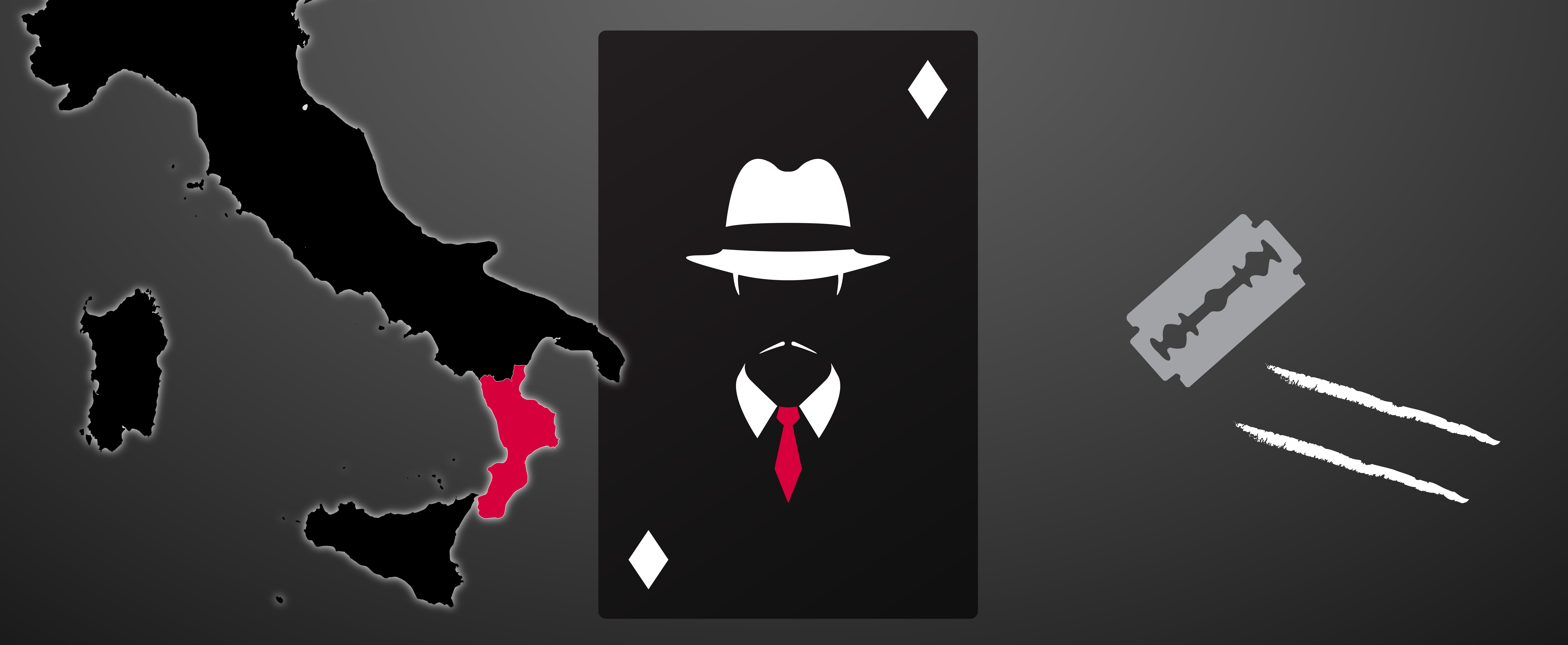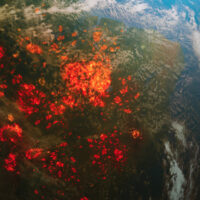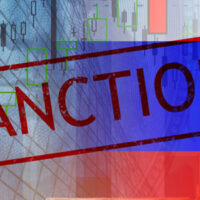
C
alabria, the southern region of Italy referred to as the “toe” of the “boot,” is home to one of the most dangerous crime syndicates in the world—the ‘Ndrangheta. Its ruthlessness has made it one of the major players in the international drug market, allowing the expansion of its criminal enterprise to encompass all of Italy and beyond. ‘Ndrangheta is considered the hardest of the four major Mafia groups to dismantle due to its secrecy and blood oaths—the other three being Campania’s Camorra, Puglia’s Sacra Corona Unita and Sicily’s Cosa Nostra.
A Brief History of the ‘Ndrangheta
The origins of the crime syndicate are debated among historians, with a variety of legends dating the birth of the organisation to 600 CE.1 The first overwhelming evidence of organised criminal bands in Calabria was found in an 1888-newspaper article reporting extortion rackets and knife duels in the town of Palmi. After the local authorities charged a number of the gangs in 1889 and 1890, an investigation led to the discovery of the birth of the ‘Ndrangheta in the Calabrian prison system, as illustrated by court documents from the time.2
The name ‘Ndrangheta is believed to have come from the Greek language, which was spoken in the southern regions of Italy. Its genesis may come from the Greek word andragathía, or a society of men of honour, heroism or manly virtue, and is related to the word andrangathō, which means “to engage in military action.”3
It was not until the end of World War II that ‘Ndrangheta began expanding in terms of territory. With the great migration of close to one million Calabrians in post-war years, pockets of the ‘Ndrangheta began to emerge throughout all of Italy and other parts of Europe, expanding their lawless activities from robbery and extortion to cigarette smuggling and kidnapping.4
It was the latter in which the ‘Ndrangheta specialised. It is estimated that between the 1970s and the 1990s, the organisation executed over 200 abductions in Italy. The most famous of these was the 1974 kidnapping of J. Paul Getty III, grandson of American industrialist and collector J. Paul Getty.5
The ransom payments provided the money needed for the organisation’s ascendance in the international drug trade. The ‘Ndrangheta’s rise in the cocaine market began in the 1980s with the increase in demand for the drug and the freedom from their rivals, Sicily’s Cosa Nostra, who had their hands full in a war with the Italian state. The alliances forged with Latin American narcotraffickers allowed them to become a force to reckon with in the global cocaine business.6
The ’Ndrangheta’s Money Laundering Machine
Members of the ‘Ndrangheta are known to be expert money launderers who can conceal their ill-gotten gains through complex ownership structures and diversified businesses.7 One factor that allows this success is their family-based web-like structure. The ‘Ndrangheta is split into two main parts—the Crimine, or the organisation’s supreme council, and the Mandamenti, the regional familial clans. Each clan is known as a ‘ndrina and consists of over 50 members. This has allowed the syndicate to spread throughout Italy and beyond in a strategy that Europol denominated “colonisation.”8
Through their global expansion and the ability to reproduce their operational structures outside of Italy, the ‘Ndrangheta was able to set up excellent relations, with cocaine producers in South America. The Italian Parliament estimates that the organisation now dominates 80% of the European cocaine trade with agents operating in every major port across the world.9
But the ‘Ndrangheta’s criminal ventures do not stop at drug trafficking. The syndicate is also known for the embezzlement of public funds, fraud, extortion, human and weapon trafficking, the illegal management of refugee facilities, gambling, corruption, toxic waste dumping and much more.10
To be able to launder massive amounts of illegal money, the ‘Ndragheta utilises front businesses in the construction sector, trade, catering, transportation, import-export of food, tourism, betting, online gaming and more. It is able to do so through the complicit network of businessmen and professionals, but also policemen, bank officials and public administration executives, who have allowed them to acquire direct and indirect control of myriads of companies and to gain significant positions in local welfare systems.11
In 2014, Demoskopika, an Italian research firm, estimated that the organisation earned as much as $60bn annually. This equates to the gross domestic product (GDP) of countries such as Lebanon, Jordan and Uruguay and is higher than Deutsche Bank’s and McDonald’s revenues combined.12
Latest Trends
Much like the Sicilian Mafia, the ‘Ndrangheta is notorious for offering economic support to families in need; a double-edged sword that traps the victims into a spiral of control and extortion with no exit. Italy’s Anti-Mafia Investigative Directorate (DIA) warned in 2021 that small- and medium-sized businesses with monetary trouble due to the COVID-19 lockdowns could have been bought by the ‘Ndrangheta, allowing them to expand their money laundering businesses.13
In the Italian region of Lombardy, the DIA found that in 2020 the ‘Ndrangheta invested in activities related to cleaning, sanitation and the hospital waste disposal sector—all businesses connected to the COVID-19 emergency.14
The DIA also noted that the state of crisis in the agribusiness supply chain created a favourable situation for the infiltration of ‘Ndragheta clans.15 In the past, the syndicate has favoured the agricultural sector for money laundering purposes. Coldiretti, Italy’s largest association representing Italian agriculture, noted in 2018 that due to the immense number of liquidities that the ‘Ndrangheta held, they were willing to lose 50% of their investment in the agriculture business to be able to launder their illegal proceeds.16
The use of new technologies has also been pointed out by the DIA. The organisation has been using various cryptocurrencies to transfer payments for colossal lots of cocaine shipments to South America.17
The Fight Against the ‘Ndrangheta
Compared to other Mafia groups such as Cosa Nostra, ‘Ndrangheta members have remained elusive and obscure to authorities due to the syndicate’s stricter organisational structure and blood vows. Very few betray their families and in recent years, only 15% of the thousands of Italian organised-crime witnesses were members of the ‘Ndrangheta.18
But something is changing. “Operation Pollino,” in motion since 2016, is a joint sting coordinated by European judicial and police forces to crack down on ‘Ndrangheta clans, the biggest to date in Europe. In 2020, Interpol, together with the Italian Department of Public Security, launched the International Cooperation Against the ‘Ndrangheta, a three-year global plan to understand the organisation’s modus operandi and share intelligence across borders.19
The recent battles have led to proceedings against over 350 members and associates of the clans, an action that Italian authorities hope will duplicate the “maxi trial” of the 1980s that weakened the Sicilian Mafia. Doubts still linger on whether the prosecution will have the desired effect.20
The Italian Public Prosecutor Nicola Gratteri is seeing a spiral of change in the clan member’s attitude. Young men unwilling to spend a lifetime in jail and lose their loved ones, or women married to ‘Ndrangheta affiliates who want a better future for their children, are beginning to break their oath of silence.21 Time will tell if love and fear will be able to bring down Italy’s most powerful crime syndicate.
Stefano Siggia, CAMS, senior consultant, Pideeco, Belgium, stefano@pideeco.be , ![]()
- Domenico Cilione, “’Ndrangheta: Origini, storia, struttura,” Antimafia Duemila, http://archivio.antimafiaduemila.com/notizie-20072011/152-focus/8710-ndrangheta-origini-storia-struttura.html?showall=1
- Carly Schnabl, “The origins of the ‘ndrangheta of Calabria: Italy’s most powerful mafia,” UCL Blog, 14 March 2011, https://blogs.ucl.ac.uk/events/2011/03/14/the-origins-of-the-ndrangheta-of-calabria-italys-most-powerful-mafia/
- “What is the ‘Ndrangheta?” Organized Crime and Corruption Reporting Project, 1 July 2021, https://www.occrp.org/en/ndrangheta/what-is-the-ndrangheta
- Ibid.
- Ibid.
- Ibid.
- “What is the ‘Ndrangheta?” Organized Crime and Corruption Reporting Project, 1 July 2021, https://www.occrp.org/en/ndrangheta/what-is-the-ndrangheta
- Egzi Toper, “Who are the ‘Ndrangheta? Italy’s most powerful crime syndicate,” TRT World, 21 October 2021, https://www.trtworld.com/magazine/who-are-the-ndrangheta-italy-s-most-powerful-crime-syndicate-50922
- “What is the ‘Ndrangheta?” Organized Crime and Corruption Reporting Project, 1 July 2021, https://www.occrp.org/en/ndrangheta/what-is-the-ndrangheta
- Ibid.
- “Le Mafie Oggi. L’Analisi della Commissione Antimafia,” Avviso Pubblico, http://www.avvisopubblico.it/home/home/cosa-facciamo/informare/osservatorio-parlamentare/attivita-dinchiesta/attivita-dinchiesta-xvii/commissione-bicamerale-antimafia/le-mafie-oggi-lanalisi-della-commissione-antimafia/
- “What is the ‘Ndrangheta?” Organized Crime and Corruption Reporting Project, 1 July 2021, https://www.occrp.org/en/ndrangheta/what-is-the-ndrangheta
- Redazione ANSA, “Covid: DIA, welfare alternativo ‘ndragheta per guadagni,” ANSA.it Calabria, 17 March 2021, https://www.ansa.it/calabria/notizie/2021/03/17/covid-dia-welfare-alternativo-ndrangheta-per-guadagni_be210483-99d2-41f8-94c7-85bf11ab9fcc.html
- Cesare Giuzzi, “’Ndragheta, l’allarme della DIA: Covid, fatture false e ristorazione, cosi i clan si prendono la Lombardia,” Corriere.it, https://milano.corriere.it/notizie/cronaca/21_febbraio_24/ndrangheta-l-allarme-dia-covid-fatture-false-ristorazione-cosi-clan-prendono-lombardia-804f45d8-76e0-11eb-843a-1237b4657d5e.shtml
- Ibid.
- Hannah Roberts, “Cosi la mafia ha messo le mani su cio che mangiamo,” Il Sole 24 Ore, 12 November 2018, https://www.ilsole24ore.com/art/cosi-mafia-ha-messo-mani-cio-che-mangiamo-AEd82reG
- Piernicola Silvis, “Mafie e criptovalute,” Il Fatto Quotidiano, 23 July 2022, https://www.ilfattoquotidiano.it/2022/07/23/mafie-e-criptovalute-contro-levoluzione-tecnologica-le-armi-investigative-sono-spuntate-3/6617135/
- Rachel Donadio, “Can Italy Defeat Its Most Powerful Crime Syndicate?” The Atlantic, October 2020, https://www.theatlantic.com/magazine/archive/2020/10/italian-mafia-ndrangheta/615466/
- Egzi Toper, “Who are the ‘Ndrangheta? Italy’s most powerful crime syndicate,” TRT World, 21 October 2021, https://www.trtworld.com/magazine/who-are-the-ndrangheta-italy-s-most-powerful-crime-syndicate-50922
- “What is the ‘Ndrangheta?” Organized Crime and Corruption Reporting Project, 1 July 2021, https://www.occrp.org/en/ndrangheta/what-is-the-ndrangheta
- Rachel Donadio, “Can Italy Defeat Its Most Powerful Crime Syndicate?” The Atlantic, October 2020, https://www.theatlantic.com/magazine/archive/2020/10/italian-mafia-ndrangheta/615466/










